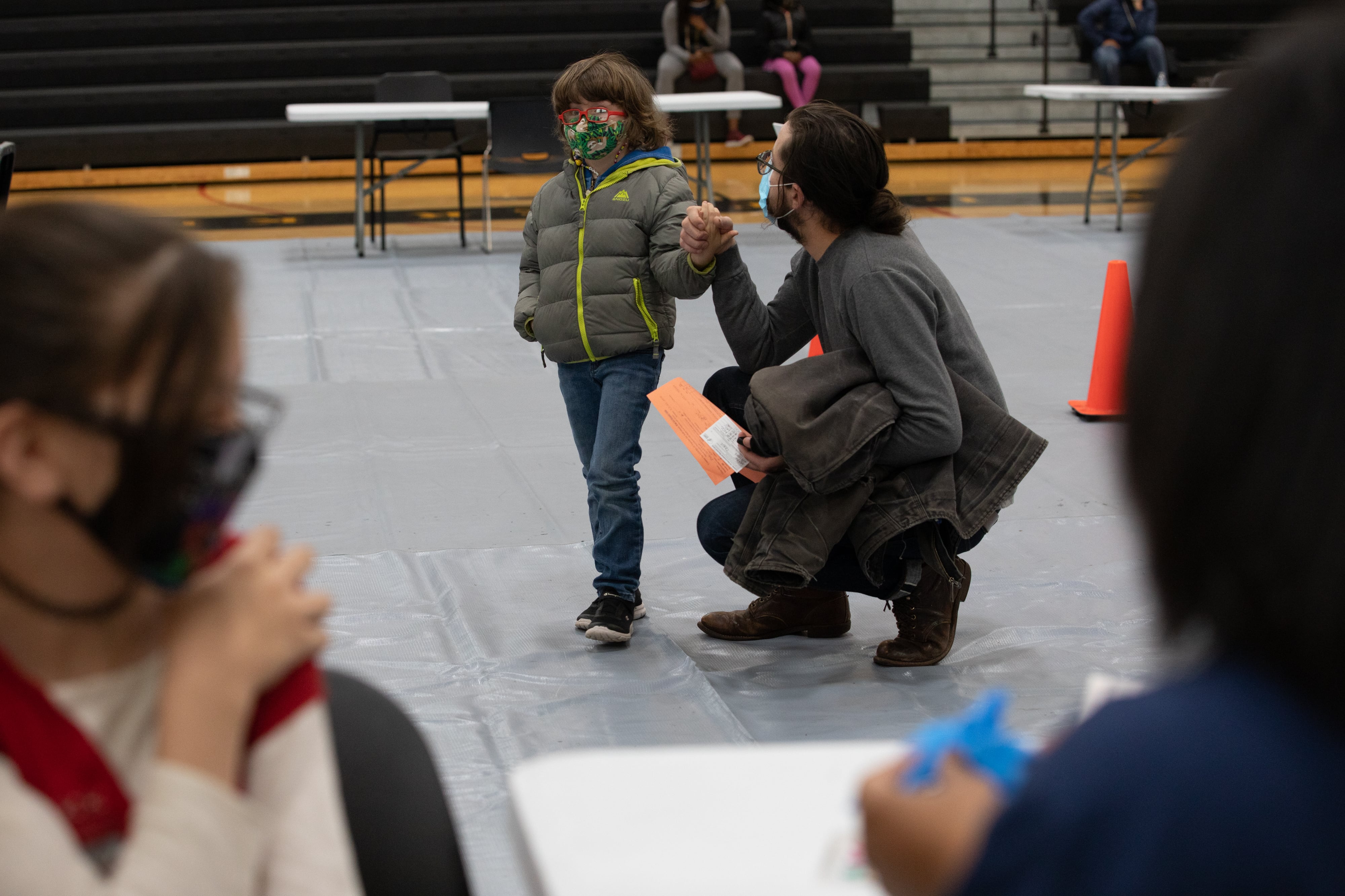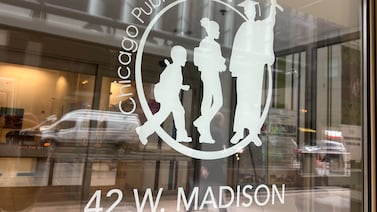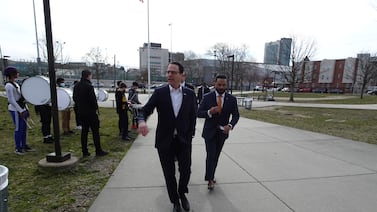At Lawndale Elementary Community Academy on Chicago’s West Side, only 6.7% of students are fully vaccinated against COVID-19. About eight miles north at John C. Coonley Elementary School, just over 90% of students are fully inoculated against the virus.
Those disparities reveal the difficulty Chicago Public Schools has faced in encouraging students to be vaccinated. Although there has been a gradual uptick in overall vaccine rates since December, the nation’s third largest district is still struggling to make inroads at predominantly Black schools on the South and West Sides, according to a data analysis by Chalkbeat.
The school-based data, which reflects fully vaccinated students through March 24, illustrates continued disparities in vaccination rates at predominantly Black schools.
Despite low vaccination rates among schools in areas hard hit by the pandemic, district leaders relaxed safety mitigations by dropping a universal mask mandate earlier this month. The decision was blasted by the teachers union and some parents who said the move would threaten the health and safety of a large swath of unvaccinated students on the South and West Sides.
Across all district-run schools, the average school is 39% fully vaccinated, but rates vary widely.
North Side schools in Lakeview, North Center, and North Park boost the highest vaccine rates with at least 72% of students fully vaccinated. By contrast, Greater Grand Crossing, Englewood, East Garfield Park, and North Lawndale schools average the lowest vaccine rates at 19% or below, according to a Chalkbeat analysis.
The vaccination rates are even lower at charter schools. Across all charter schools, the average school is 33.4% fully vaccinated, data shows.
Here are some takeaways from Chalkbeat’s analysis of Chicago’s school-based vaccination data:
- Majority Black elementary and high schools had an average vaccination rate of 22%, compared to majority Latino elementary and high schools, which averaged about 47%.
- Majority Latino schools saw a 22% increase in uptake between Dec. 1 and March 24; by contrast, majority Black schools saw an increase of about 11% over the same time period.
- Nearly 75% of schools across the district have less than half of their student population against the virus. More than 34% of schools across the district have less than a quarter of their students vaccinated, and nearly 30 schools have less than 10% of their students fully vaccinated.
- District-run schools had overall higher vaccination rates than charters at both the elementary and high school levels.
Since July, CPS has partnered with the city’s Department of Public Health, Illinois Department of Public Health, and the Centers for Disease Control and Prevention to promote vaccines. The district has opened four regional vaccine hubs, hosted more than 600 mobile vaccination clinics and events, and canceled a day of classes for a Vaccine Awareness Day after the pediatric COVID vaccine was approved to encourage families to get their 5- to 11-year-olds inoculated.
Still, these efforts have been marginal in moving the needle, especially at schools on the South and West Side, data obtained by Chalkbeat through multiple records requests show.
North Side schools in Lincoln Park, Lake View, and North Center saw the largest rate increase of 40 percentage points or more between Dec. 2021 and March 2022, data shows.
By contrast, schools in predominantly Black neighborhoods including Greater Grand Crossing, East Garfield Park, Englewood, North Lawndale, South Shore, and South Chicago saw increases of less than 10 percentage points between Dec. 2021 and March 2022, data shows.
Even as COVID cases have declined significantly, health officials say low uptake is a point of concern and that schools should be a centerpiece in the strategy to boost rates. Educating families about the vaccine is key to combating misinformation and increasing uptake, says David Valero, a pediatrician with Esperanza Health Centers, which serves neighborhoods on Chicago’s Southwest Side.
CEO Pedro Martinez, speaking the week the district shifted to mask-optional, acknowledged the vast disparities in vaccination rates. The district remains committed to its vaccine efforts and will continue vaccination events at schools with low uptake, Martinez said.
Earlier this month, Chicago Public Schools said it would “continue to explore ways to improve access to vaccination and encourage parents to pursue this safe and effective protection.”
But Chicagoland Vaccine Partnership, a nonprofit group promoting and hosting mass vaccination campaigns across the city, previously told Chalkbeat that a region-wide effort and eliminating barriers to vaccine access is needed.
Hurdles to access such as transportation, convenient vaccination times, and language barriers still remain an issue for many working-class people, Scott Thorp, senior project manager at the nonprofit, told Chalkbeat last month.
“The more we can remove those barriers to the broader access issue,” he said, “the more likely it is that people are going to get vaccinated.”
Mauricio Peña is a reporter for Chalkbeat Chicago, covering K-12 schools. Contact Mauricio at mpena@chalkbeat.org.







